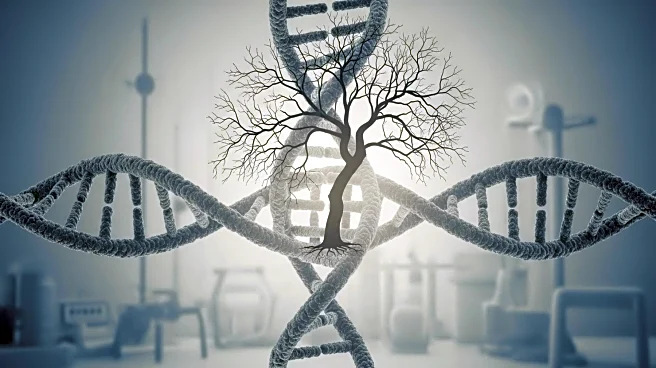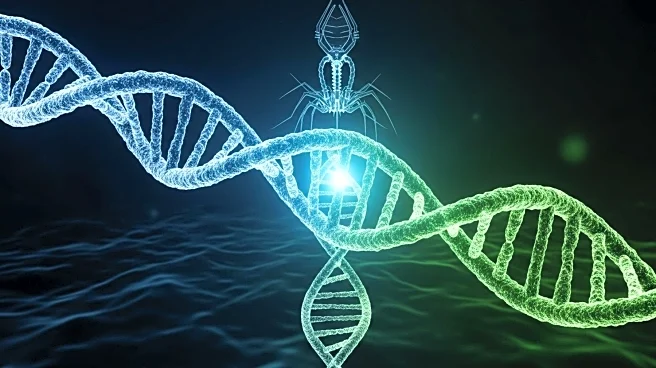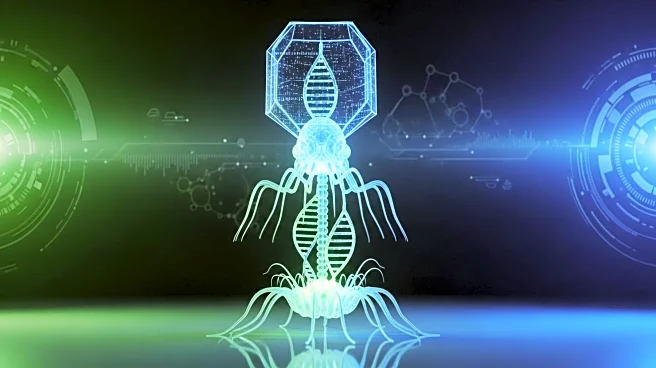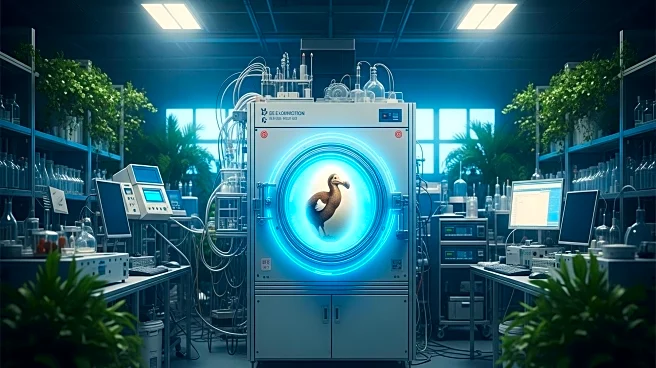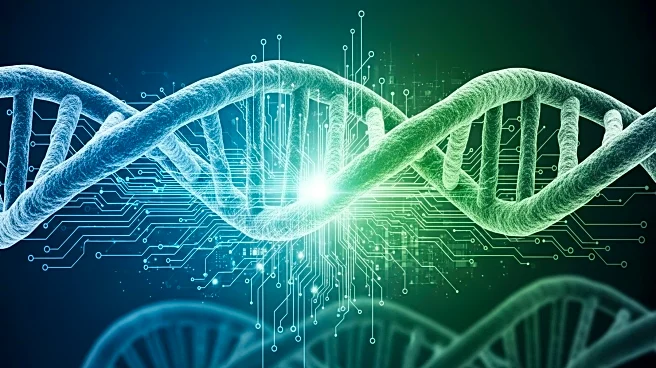What's Happening?
Researchers at the University of Illinois Urbana-Champaign have made significant strides in understanding the origin and evolution of the genetic code. Led by Professor Gustavo Caetano-Anollés, the team explored the evolution of dipeptide sequences, which are basic modules of two amino acids linked by a peptide bond. Their study involved analyzing a dataset of 4.3 billion dipeptide sequences across 1,561 proteomes from the three superkingdoms of life: Archaea, Bacteria, and Eukarya. The findings suggest that dipeptides played a crucial role as early structural modules of proteins, contributing to the formation of the genetic code. The research also highlights the synchronicity in the appearance of dipeptide pairs, which may have transformative implications for biology.
Why It's Important?
This research provides valuable insights into the evolutionary roots of the genetic code, which is fundamental to understanding life's origin. The study's findings have implications for fields such as genetic engineering, synthetic biology, and biomedical research. By uncovering the role of dipeptides in the genetic code, scientists can better understand the constraints and logic underlying genetic processes, potentially guiding the design of new biotechnological applications. The research emphasizes the importance of an evolutionary perspective in synthetic biology, which can enhance genetic engineering by aligning with natural processes.
What's Next?
The study opens avenues for further exploration into the role of dipeptides in genetic evolution and their potential applications in modern biotechnology. Researchers may continue to investigate the co-evolution of synthetases and tRNA in relation to amino acid appearance, as well as the implications of dipeptide duality in genetic coding. These findings could lead to advancements in genetic engineering techniques and the development of new therapeutic strategies.
Beyond the Headlines
The discovery of dipeptide duality and its synchronicity in the evolutionary timeline suggests a fundamental aspect of the genetic code that could reshape our understanding of molecular biology. This duality may indicate that dipeptides were encoded in complementary strands of nucleic acid genomes, interacting with primordial synthetase enzymes. Such insights could influence future research on protein folding and function, as well as the development of novel biotechnological applications.

